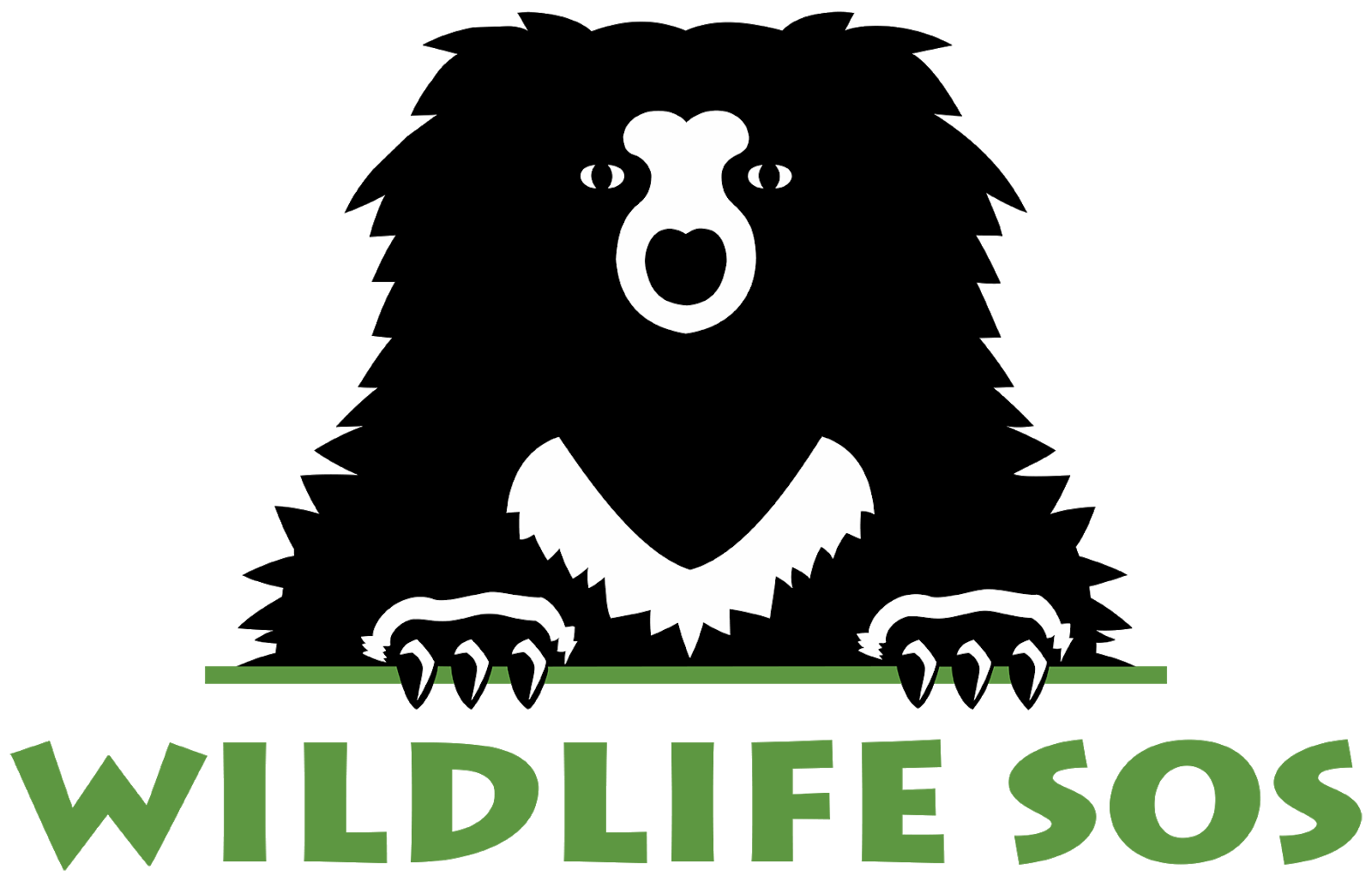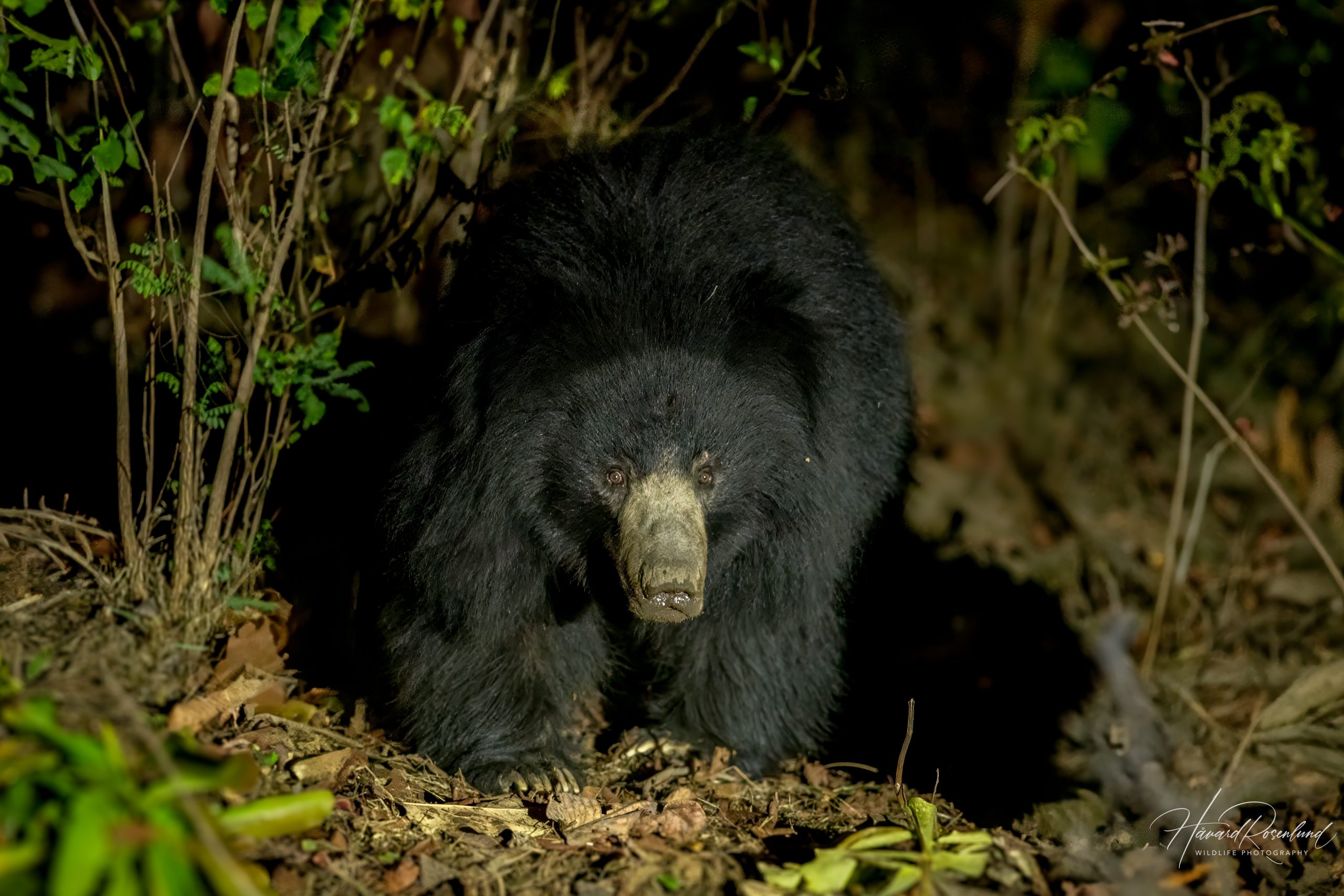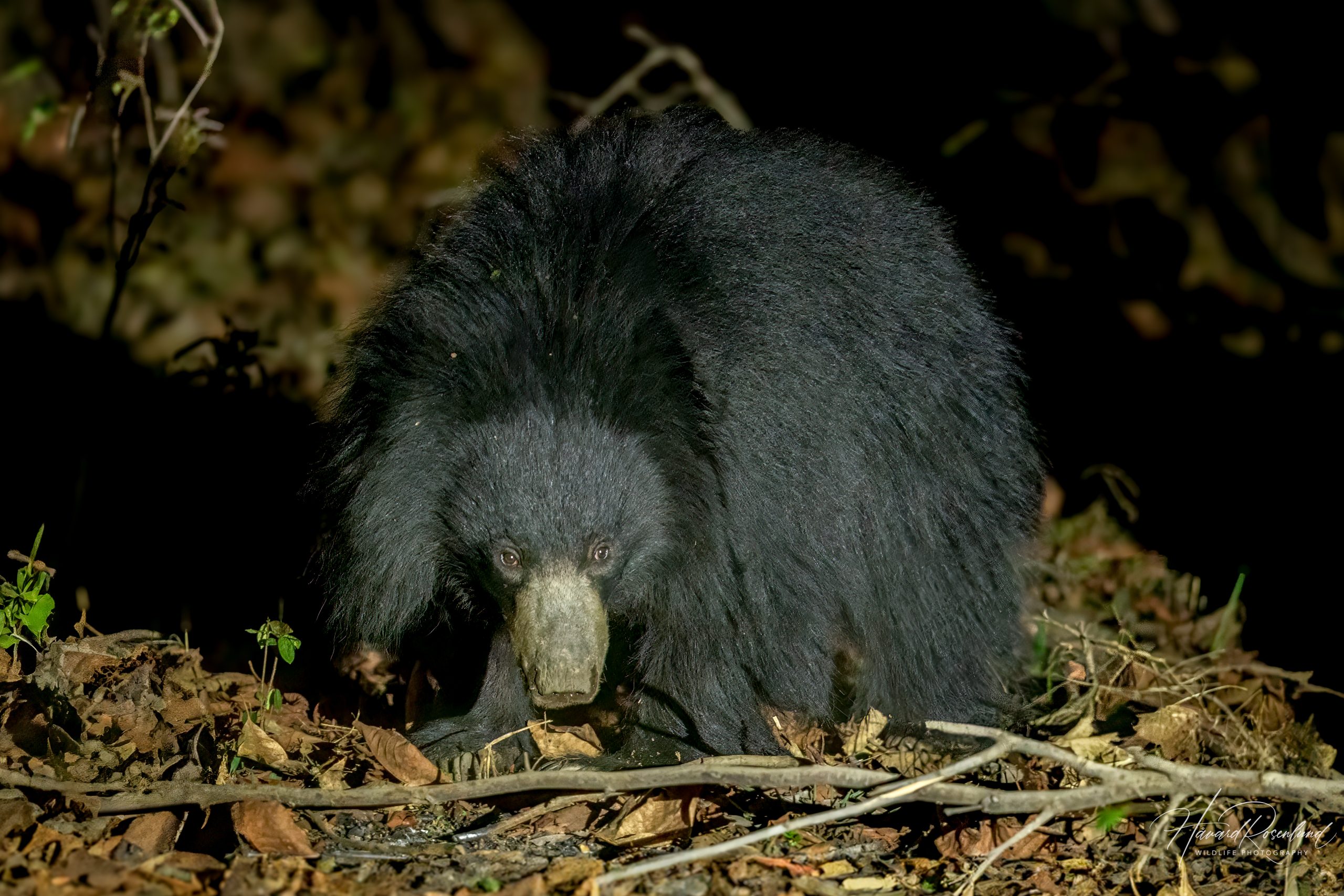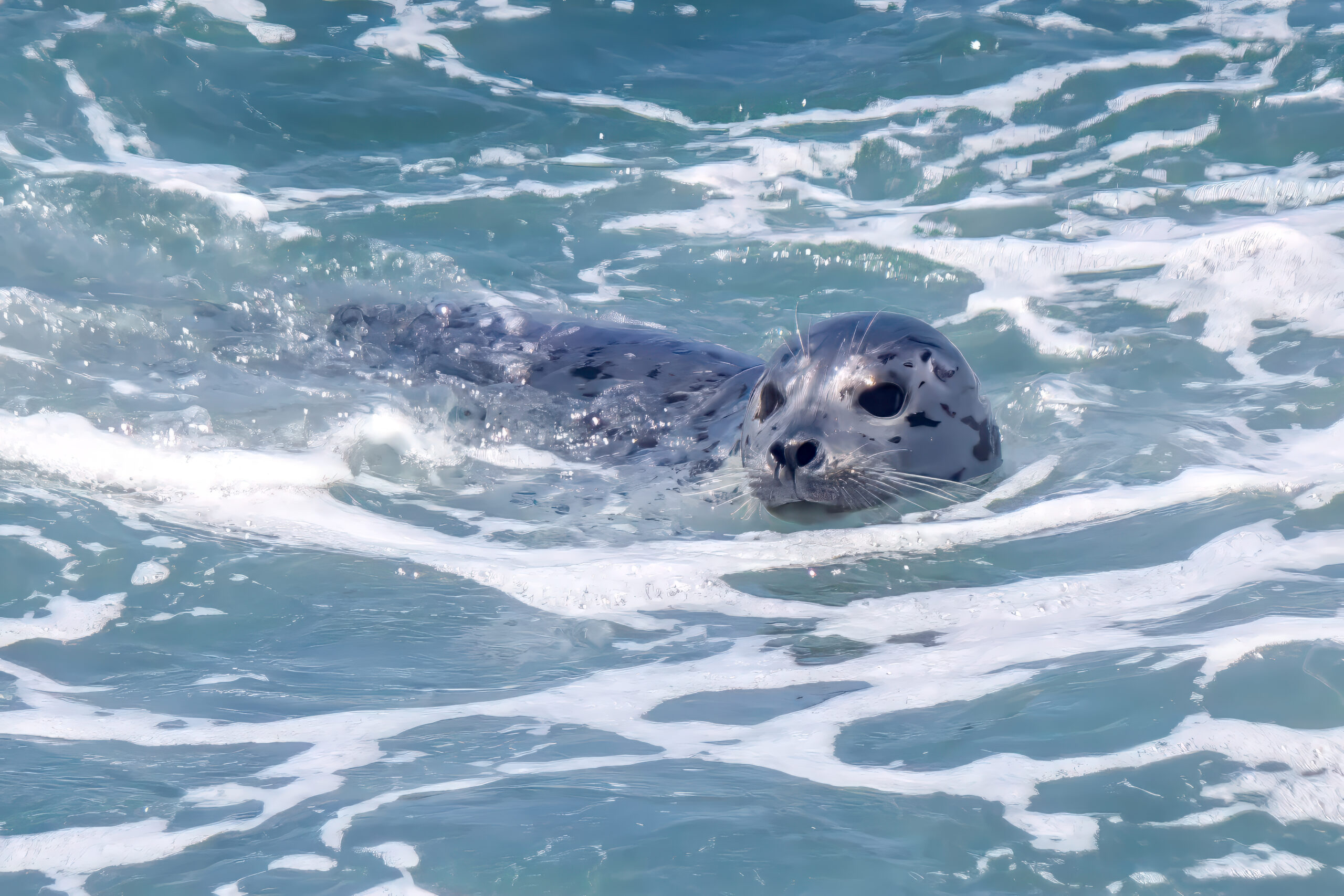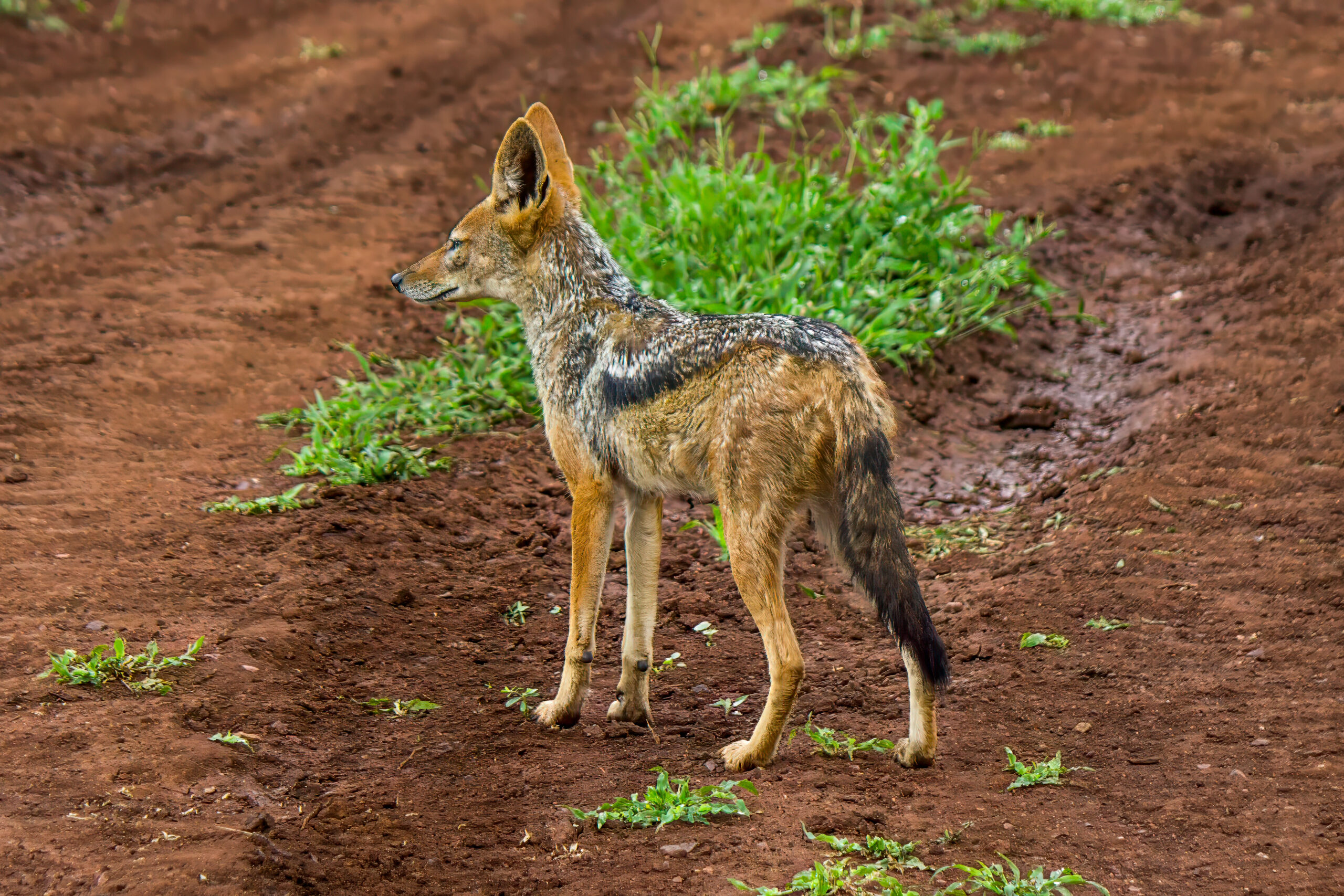Description
The sloth bear (Melursus ursinus) is a unique bear species endemic to the Indian subcontinent, primarily distributed across India, Sri Lanka, and Nepal. This species is easily recognizable with its long, black, shaggy coat, and a distinctive white or yellowish “V” shape on its chest. Unlike other bear species, the sloth bear has an elongated snout and a lower lip adapted for sucking up insects, particularly ants and termites. Adult sloth bears vary in weight from 55 to 145 kg (121 to 320 lbs), with males generally larger than females. They stand 60 to 90 cm (24 to 35 inches) at the shoulder, reaching a total body length of 1.4 to 1.9 meters (4.6 to 6.2 feet). The sloth bear’s long, curved claws and hairless soles, which aid in its insectivorous feeding habits, distinguish it from other bear species like the brown bear (Ursus arctos) or the Asian black bear (Ursus thibetanus).
Habitat
Sloth bears are highly adaptable and can thrive in a variety of forested environments. They inhabit dry deciduous forests, moist deciduous forests, and tropical evergreen forests, showing a preference for areas with dense undergrowth and rocky outcrops. These habitats provide essential cover and denning sites, crucial for their survival and reproduction. In addition to forests, sloth bears can be found in grasslands and scrublands, often utilizing caves, crevices, and other natural shelters. Their range extends from lowland forests and foothills to elevations as high as 1,500 meters (4,900 feet).
Diet
Sloth bears are omnivorous, with a diet heavily skewed towards insects, especially ants and termites. They use their powerful sense of smell to locate insect colonies and then employ their long, curved claws and specially adapted snouts to break open termite mounds or anthills. They have a unique method of feeding, sucking insects through a gap in their front teeth, producing a characteristic snorting noise. Besides insects, sloth bears consume a variety of fruits, honey, and occasionally small vertebrates and carrion. During fruiting seasons, they may spend considerable time in trees, feeding on fruits and honey, highlighting their opportunistic and adaptable feeding behavior.
Behavior
Sloth bears are primarily solitary creatures, though they may occasionally be seen in pairs, especially during the mating season or when a mother is with her cubs. They are known for their vocalizations, which include grunts, roars, and snorts, used for communication and to deter potential threats. Unlike most bear species, sloth bears do not hibernate, as they inhabit tropical regions where food is available year-round. These bears are excellent climbers and swimmers, often climbing trees to access food or escape from predators. Their behavior is generally nocturnal, with peak activity occurring during the cooler parts of the day and night. Despite their solitary nature, they have been observed to exhibit playful behavior, particularly among cubs and juveniles.
Reproduction
The breeding season for sloth bears typically occurs from April to June. Following a gestation period of approximately 6 to 7 months, females give birth to one or two cubs, usually in a secluded den. Cubs are born blind, hairless, and entirely dependent on their mother for nourishment and protection. The mother sloth bear exhibits a unique behavior by carrying her cubs on her back while foraging, a practice that continues for several months. Weaning occurs around six months of age, but the cubs may remain with their mother for up to two to three years, learning vital survival skills. Sloth bears have a lifespan of about 20 years in the wild, though this can be significantly reduced in areas with high levels of human-wildlife conflict.
Status
The sloth bear is currently listed as vulnerable on the IUCN Red List, with an estimated population of around 20,000 individuals remaining in the wild. Their populations are fragmented and experiencing a declining trend due to various human pressures. Sloth bears are most threatened in regions where habitat loss and fragmentation are prevalent.
Threats
Sloth bears face numerous threats, primarily driven by human activities. Habitat destruction due to deforestation, agricultural expansion, and infrastructure development significantly reduces their available habitat, forcing them into closer proximity with human settlements. This often leads to human-wildlife conflict, as sloth bears may raid crops or come into contact with livestock, resulting in retaliatory killings. Additionally, poaching poses a severe threat, as sloth bears are hunted for their body parts, which are used in traditional medicine and as trophies. The illegal wildlife trade further exacerbates their decline.
Conservation efforts include establishing and maintaining protected areas, creating wildlife corridors to connect fragmented habitats, and implementing community-based conservation programs. Education and awareness campaigns aim to reduce human-wildlife conflict and promote coexistence, while anti-poaching measures and stricter enforcement of wildlife protection laws are essential to curb illegal activities.




